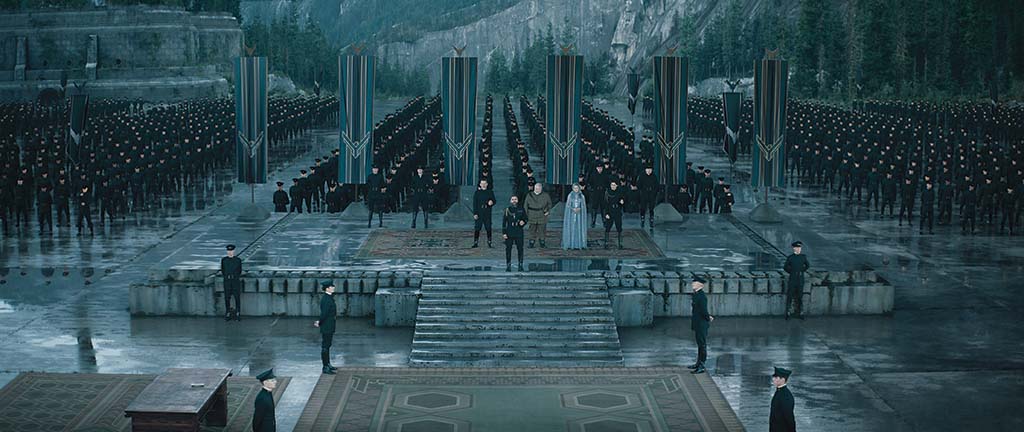DISCLAIMER: I found no cite that proves or disproves any of the following speculation.
I’m inclined to believe that at least part of the platform was built and that the principal actors standing on it were really there. I am uncertain whether the banners on the platform or the people and carpets in front of the platform are real or (at least partially) CG.
I am far more certain everything behind the platform and to the sides of it is CG. Note that this includes all of the background, the architecture, forestry and most of the “people.” I strongly suspect many of those CG-people do not have faces, but the resolution of the still prevents me from confirming it.
To my eyes, it appears completely fake. The images to the sides of the platform look like they’ve been composited to a much narrower live-action plate. Not definitive on its own, but the limited color palette is commonly a sign of CG. Also, I know from common sense they did not build that set, nor feed, costume and pay for all those extras as the costs would have been astronomical (especially when CG is available).
Not something I would have noticed (or cared about) while watching the film, but from the still, you can see that the guy standing in front of the platform to the immediate right of the stairs is casting a shadow extending (screen left) in front of him. Now look at the dude facing him on the immediate left of the stairs: he casts no shadow at all. I don’t think he’s real.
Miniatures could not be used for shots like this that have a live-action element; if there is any camera movement as well – I don’t recall whether there is or not in the scene – that would make using miniatures beyond impractical.
My viewing entertainment preference for miniature/model work over CG never befouls my judgement when it comes to knowing what techniques would work for any given scene. More to the point, simply because I might enjoy watching one technique more than the other, that in no way precludes me from enjoying the other. Why does it have to be a competition between them? That way of thinking is completely alien to me.
“…obviously, we had the limitations on some of the sets, not all the sets, but some of the sets we had limitation for the space, because some of them also were just for budgetary reasons.” - https://screenrant.com/dune-movie-denis-villeneuve-avoid-green-screen-how/
“Having fabric painted to mimic what the set would ultimately look like also allowed post-production artists to avoid having to paint out awkward green shades of color produced by green screens. The use of fabric to imitate a deeper space than is financially or physically possible is a common practice in theater, where actors are often limited to a small (by comparison) stage.” - Here's How Dune Managed To Avoid Using Green Screen - IGN

